[/caption]
After a more than decade long journey of 6 billion kilometers, hopes are high for a celestial date in space between an icy comet and a thrusting probe on Valentine’s Day 2011. The rendezvous in space between NASA’s approaching Stardust-NExT spacecraft and Comet Tempel 1 takes place nearly on the exact opposite side of the Sun on Feb 14, 2011 at approximately 11:37 p.m. EST (8:37 p.m. PST).
The top science goal is to find out “how much the comet’s surface has changed between two close passages to the sun” since it was last visited in 2005, said principal investigator Joe Veverka of Cornell University, Ithaca, N,Y at a media briefing today, Jan 19, at NASA Headquarters. Indeed it’s the first time in history that a comet has been visited twice by space probes from Earth.
The lead scientists and engineers outlined the plans for the cometary flyby at the briefing. See a video of the entire briefing below.
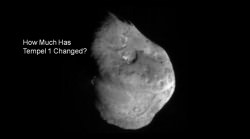
Since the last visit in 2005, the comet has completed another orbit around the sun. “It will be the first time we’ll be able to see changes after a comet has passed through one perihelion,” explained Veverka. Tempel 1 belongs to the Jupiter family of comets and orbits between Mars and Jupiter.
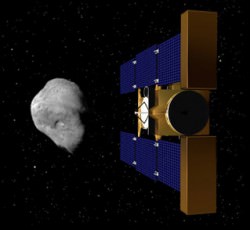
Comet Tempel 1 suffered a cosmic collision during that first encounter with an emissary from Earth when NASA’s Deep Impact smashed a copper projectile directly into the comets nucleus. The blast created an impact crater and ejected an enormous cloud of gas and debris. Reflected light off the dust particles totally obscured the view of the crater and prevented any images from being taken. Researchers had hoped to determine the size of the crater. A lot of bets hinge on that determination.
“We have a chance to complete the Deep Impact experiment. We hope to see how big the impact crater is and what that tells us about the mechanical properties, ” said Veverka.
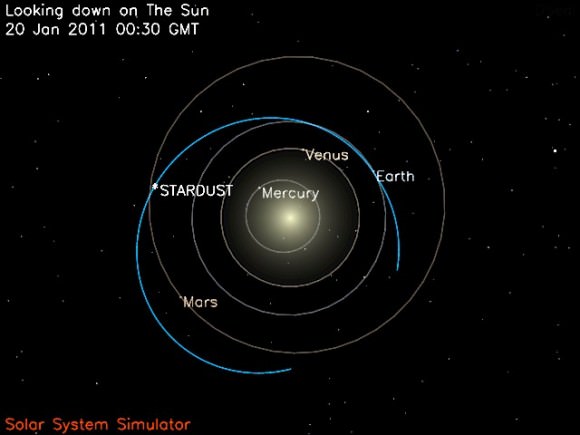
This image shows the current position of the STARDUST-NExT spacecraft and the spacecraft's trajectory (in blue) around the Sun. Credit: NASA
With just over 3 weeks remaining, the craft is approximately 24.6 million kilometers (15.3 million miles) away from its encounter. Stardust-NExT will zoom past the nearly 6-kilometer-wide comet (3.7 miles) at a distance of approximately 200 kilometers (124 miles) and at a speed of 10 km/sec according to Tim Larson, the mission’s project manager from the Jet Propulsion Laboratory (JPL), Pasadena, Calif.
“The spacecraft is still working well 12 years after launch. This is a bonus mission with a scientifically desirable target which we can get close to,” said Larson.
“Everything will happen autonomously,” stated Larson. “The craft will be about 2 AU away from Earth at encounter. Since the round trip signals will take about 40 minutes there is no chance for any real time changes.”
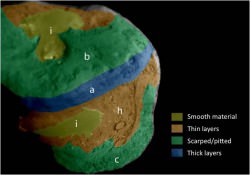
“Stardust-NExT will take 72 high resolution images during the close approach encounter. These will be stored in an onboard computer and relayed back to Earth starting about an hour later. It will take about 12 hours to get them all back.”
NASA says that after processing, the images are expected to be available at approximately 4:30 a.m. EST (1:30 a.m. PST) on Feb. 15.
“For the first time we’ll go back to see what happens to a comet since our last visit,” explained Pete Schultz, co-investigator of Brown University, Providence, R.I. “The comet has been out to the orbit of Jupiter and back to Mars and had several outbursts of gas and dust. In 2005 we saw old and new surfaces. So it has a complicated geologic history. We hope to resolve the crater and see ejecta. But there are many unknowns. What we see – whether its the crater or the other unseen side – all depends on the rotation of the comet nucleus.”
“The comet dynamics are complex and erratic, not inert,” said Steve Chesley, a co-investigator at JPL. “They are like a rocket with no one at the controls. The orbit can change. So it is a huge challenge to target a spacecraft for a flyby or rendezvous.”
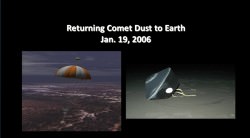
Stardust-NeXT is a repurposed spacecraft. The Valentine’s Day encounter will be the last hurrah for the aging probe. Stardust was originally launched way back in 1999. It flew by Comet Wild 2 on Jan. 2, 2004 and collected cometary dust particles which were returned to Earth in a sample return capsule in Jan. 2006. Since then it has continued its solitary voyage through the void of the space.
The craft is nearly out of fuel and all movements consume fuel. It is totally dependent on the reaction control thrusters for navigating through space and pointing its camera and science instruments, said Larson.
“We are confident that we will have enough fuel to finish up this mission. It has been a big, big challenge to maintain a reserve supply. After the mission there won’t be much left that the spacecraft can do. The last trajectory correction maneuver is two days before arrival. That is also when we will take our last optical navigation images for targeting the spacecraft.”
.
Only about a third of the surface of Tempel 1 was photographed by Deep Impact in 2005. “We’ll be looking at old territory and new and some overlap,” explained Veverka. “The science team is awfully excited and just can’t wait to see the pictures on Valentine’s day.”
“We have no idea how quickly the surface features change and whether its millions of years or days,” concluded Veverka.
“We expect new discoveries no matter what we see,” Larson summed up
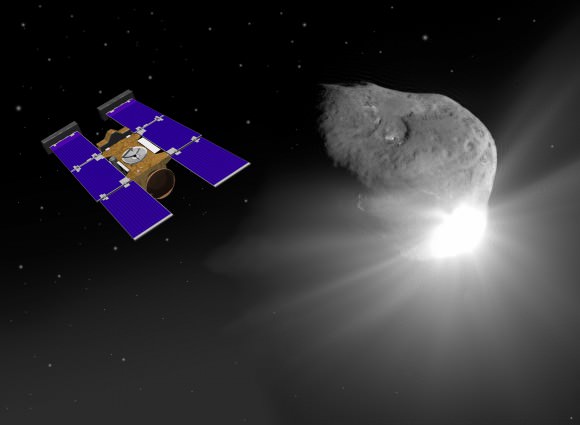
See video and graphics below of Jan 19, 2011 Media briefing from the Science Team about plans for the cometary encounter
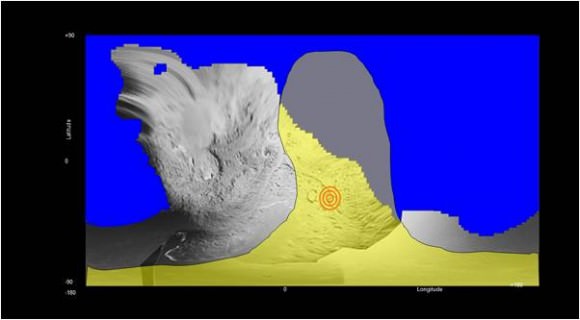
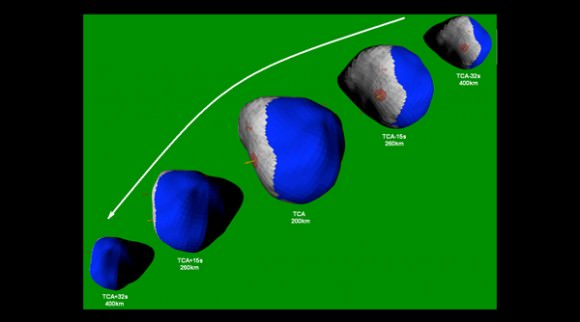
Jan. 19, 2010: Science Team Media Briefing
The Stardust spacecraft has been repackaged for the Stardust-NexT mission. Stardust-NExT will rendezvous with Comet Tempel 1 on February 14, giving scientists an opportunity, for the first time, to search a comet’s surface for changes following its orbit around the sun. Mission scientists discussed the relevance of the mission at a briefing at NASA headquarters in Washington
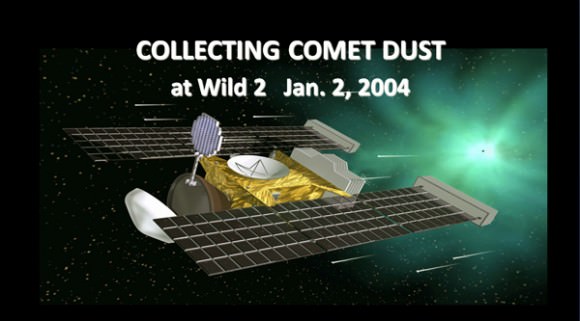

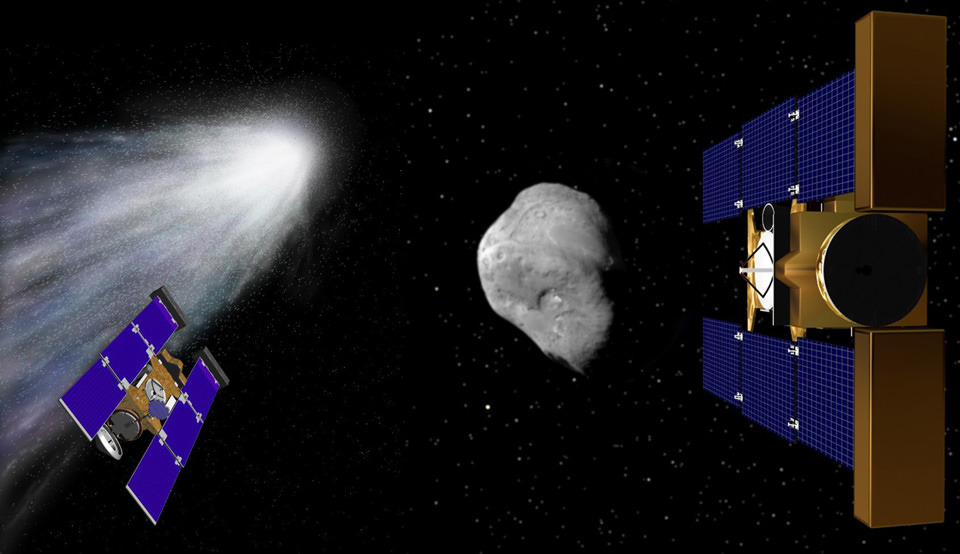
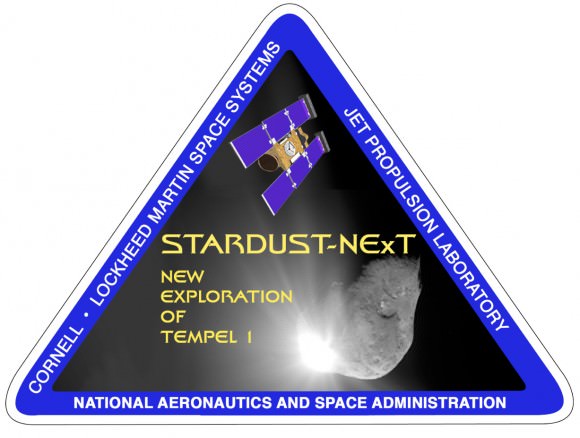
From Wikipedia : ( http://en.wikipedia.org/wiki/Tempel_1 )
“Tempel 1 (official designation: 9P/Tempel), is a periodic comet discovered by Wilhelm Tempel in 1867.”
Tempel 1 not Temple.
Judging on this error, the rest might be worth checking too.
sp fixed
yes its the first revist. fixed
The caption of the first image says:
” – by becoming the first spacecraft to visit 2 comets and gather science data:”
If I’m not mistaken, the Deep Impact spacecraft that first visited Tempel 1 actually took the above title when it visited Hartley 2 in November.